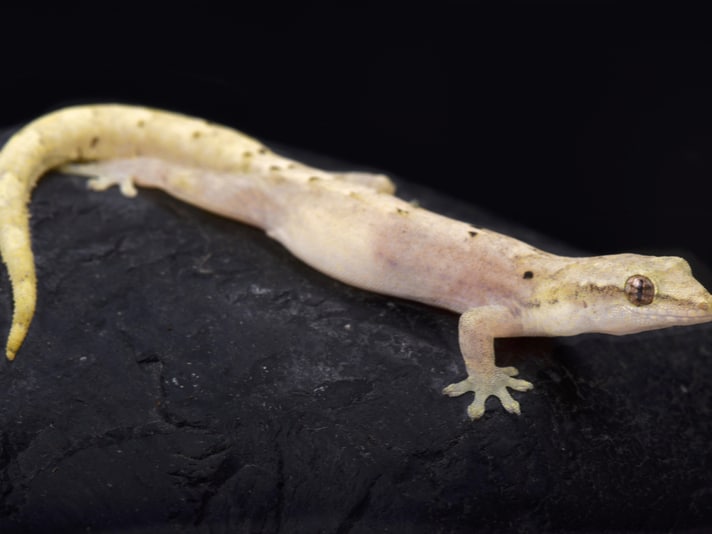Description:
A naturalistic enclosure is great for a mourning gecko, set up with live or artificial plants. I suggest a front-opening enclosure measuring 18 by 18 by 18 inches. Use some ground coconut coir as the substrate; a few inches deep is all that’s needed. Include some dead tropical leaves on the ground, and perhaps a few cork hides. I offer mourning geckos a water bowl. In a naturalistic enclosure that will include misting, a water bowl is likely not needed, but I like to provide one anyway. Position narrow branches, either artificial or real, throughout the enclosure, providing plenty of areas for the geckos to climb on. Elevated hides made of cork bark or similar commercially available items will be most welcome. Mourning geckos are nocturnal, but they will venture out during the day if they feel secure in their enclosures. A water feature, such as a water fall or plant dripper, should be provided. There are many types and sizes on the market. You’ll also want to mist the tank daily, either using a hand mister or a commercial mister. Misting is needed to keep the humidity up — aim for a humidity level of about 60 to 70 percent — but it also serves as the gecko’s main source of drinking water, which they will lap up from misted surfaces inside the enclosure. Unless your house is very cold, supplemental light and heat is not really needed for mourning geckos. An ambient temperature inside the enclosure of about 70 to 75 degrees Fahrenheit is fine. If it’s a bit cooler than that, add a 40-watt night light on top of the enclosure. You can use a fluorescent light for viewing your geckos, but they are more comfortable in a dim environment. Because mourning geckos are small, the previously recommended enclosure size can easily house up to 10 adults. They do tend to eat each others’ eggs and hatchlings, though, so be prepared to try to protect both, if possible. Mourning geckos are insectivores and will each just about any insect they can catch and swallow. Keep in mind that these geckos are tiny, so tiny food is required. Small crickets, fruit flies, very small roaches, small mealworms and small Calci-worms are great. Mourning geckos will also lick baby food out of a bowl, or you can try offering them some of the nectar-based, commercially manufactured crested gecko or day gecko diets as an add-on. The mourning gecko is a parthenogenetic species, meaning they are basically all females and can reproduce without fertilization. This makes them very easy to breed, and you only need one to get babies! All babies are female clones of the mother. Mourning geckos do vary in color and pattern, so they are not all identical. You can find different shades and colors, but they’re mostly yellowish brown. Although they are surely produced in captivity, I’m not aware of a lot of commercial breeding of mourning geckos that’s being done. I have produced many over the years, and they are small and cute. Despite their breeding readiness, mourning geckos turn up at reptile stores and expos only rarely. In the wild, though, they are very widespread in a range that includes Sri Lanka, tropical Asia, Mexico and Central America. The species adapts well to human habitation and wild populations are not at risk. Extra Info: Mourning geckos are vocal and can be heard making chirping sounds in the night. They come by their common name because it was thought that because they are all female, their chirping sounds are them mourning the loss of their mates. Ken Foose produced his first captive-bred snakes at age 11. With a Master’s Degree in zoology, he has been both a zookeeper and curator. He opened Exotic Pets, which specializes in reptiles and amphibians, in Las Vegas in 1991. He is currently president of the International Herpetological Symposium.
Habitat:
Humid forests and jungles; often found near human habitation
Range:
Widespread throughout the South Pacific, Latin America and Hawaii
Scientific Name: Lepidodactylus lugubris
Species Group: gecko
Family: Gekkonidae
Size: About 3.5 inches
Level: intermediate
Weight: less-than-1-lb
Dangerous: No


